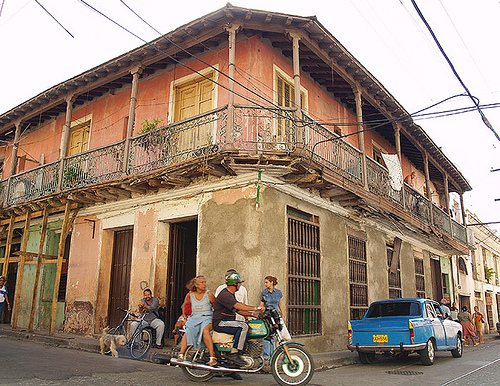Cuba Has Its Own Earthquake Challenges
Patricia Grogg*

HAVANA TIMES, April 14 (IPS) — With the wounds exposed by earthquakes in Haiti, Chile and other parts of the Americas, Cuba is beginning to focus on its own great challenge: adapting construction for housing that can withstand strong tremors.
“An earthquake is not just a physical phenomenon, but also social,” according to Fernando Guasch, a researcher with Cuba’s national seismology research centre, CENAIS. This Caribbean island nation is one of the countries in the danger zone and has many buildings that are highly vulnerable to the effects of temblors.
In Chile, the Feb. 27 quake that measured 8.8 on the Richter scale, followed immediately by a tsunami, claimed the lives of nearly 500 people and caused damages worth 30 billion dollars, of which about 21 billion dollars was related to loss of infrastructure, according to the Treasury.
In Haiti, the poorest country of the Americas, the death toll from the Jan. 12 quake (7.0 on the Richter scale) reached 220,000, with more than one million people left homeless.
In January and February 2001, quakes in El Salvador killed 1,159 people and left 1.5 million homeless. The economic impact – direct and indirect – was estimated at 2.8 billion dollars, according to figures published in 2003 by the United Nations Environment Program (UNEP).
The Latin American and Caribbean region is among those most exposed to seismic disasters because it sits upon at least four tectonic plates, whose borders are the sites of continuous seismic and volcanic activity.
In areas like the Caribbean, additional threats of natural disaster include hurricanes and floods.
UNEP documents give Cuba a categorization of “high” in terms of vulnerability to hurricanes, earthquakes, floods and drought.
The devastation that Haiti and Chile suffered from the recent earthquakes, and the seismic activity that followed in the Caribbean, awakened Cuba to the risk of telluric disaster and the realization that the country must prepare in order to minimize the negative consequences.
So far this year, more than 20 temblors have been felt in the eastern-most area of this archipelago, with the strongest on Mar. 20 (5.6 on the Richter scale), sending people running from their homes, most of which are inadequate for withstanding strong quakes.
The epicenter was 62 kilometers southeast of Santiago, Cuba, 7.6 km underground. It was felt in three other provinces of the region: Guantánamo, Granma and Holguín, which are less developed and at higher seismic risk. Experts warn that strong quakes could occur throughout the country.
“Here, we know what to do during the hurricane season (June-November), but how are we to confront something if we don’t know when it will occur?” wonders María Eugenia Rodríguez, a resident of Havana who has family in Santiago and Guantánamo.
In 2008, three hurricanes hit Cuba and caused damages officially estimated at 10 billion dollars. That cost includes damage to more than a half-million homes, worsening the chronic housing deficit that this island nation suffers.
One concern of the experts at CENAIS, based in Santiago, Cuba, is the lack of awareness of the risk of quake disasters.
The greatest danger lies in far eastern Cuba, due to its proximity to the Bartlett-Caimán system of faults, the active border of the lithospheric plates of North America and the Caribbean.
Among the biggest vulnerabilities in Santiago, capital of the province of the same name, and home to 500,000 people, is the quality of the home construction, which ranges from barely adequate to poor in 80 percent of the cases.
Experts consulted by Tierramérica, who requested that their names be withheld, warned that although many of the buildings erected in Santiago after the 1980s include quake-resistant elements, two decades of poor maintenance has meant continued deterioration and increased vulnerability.
Laws have established construction standards for the entire country, with quake resistance depending on the location and risk, but not all construction companies follow the rules because they are not obligatory, they push up costs, or because they simply do not have the training.
*This story was originally published by Latin American newspapers that are part of the Tierramérica network. Tierramérica is a specialized news service produced by IPS with the backing of the United Nations Development Program, United Nations Environment Program and the World Bank.





